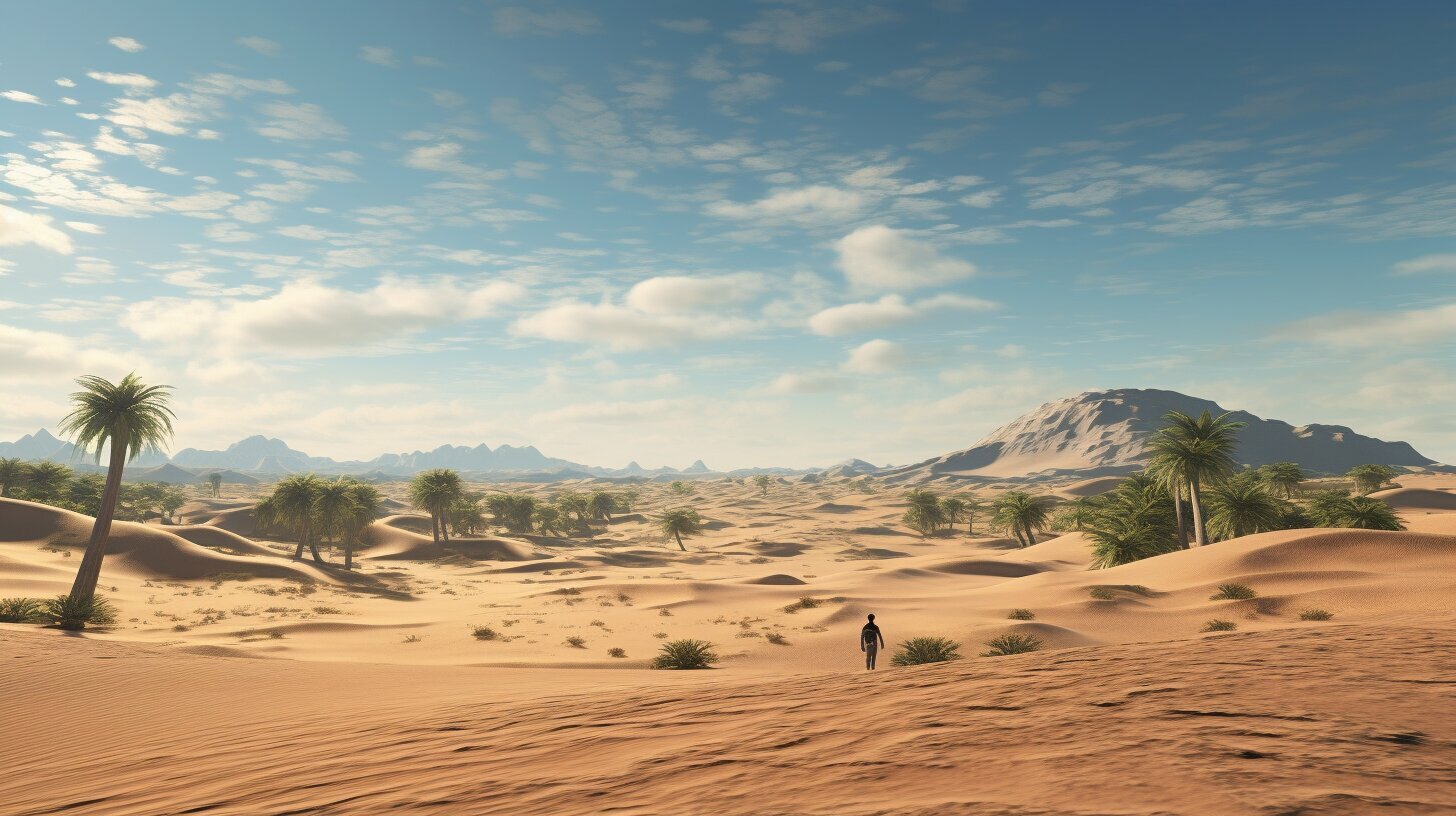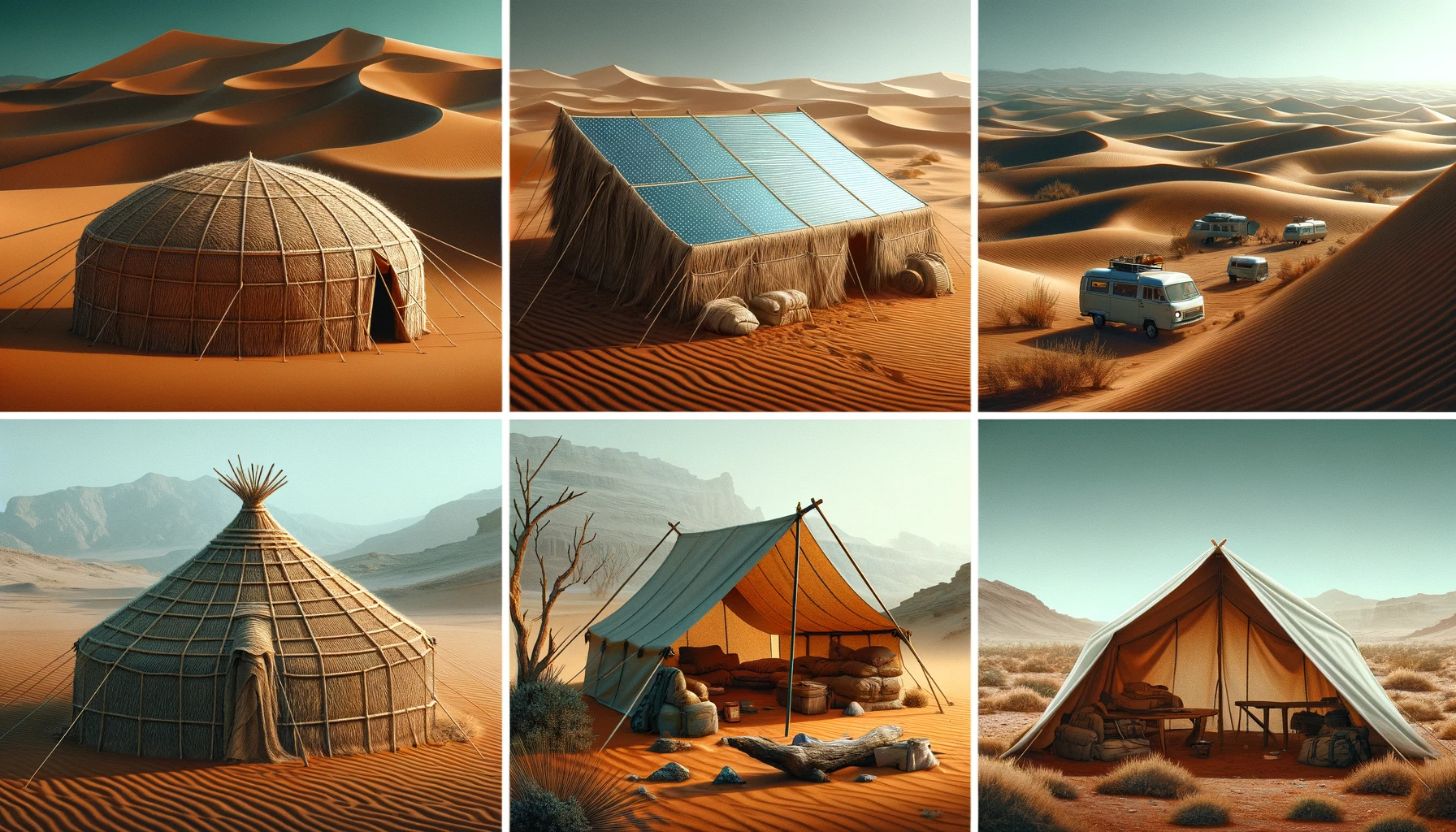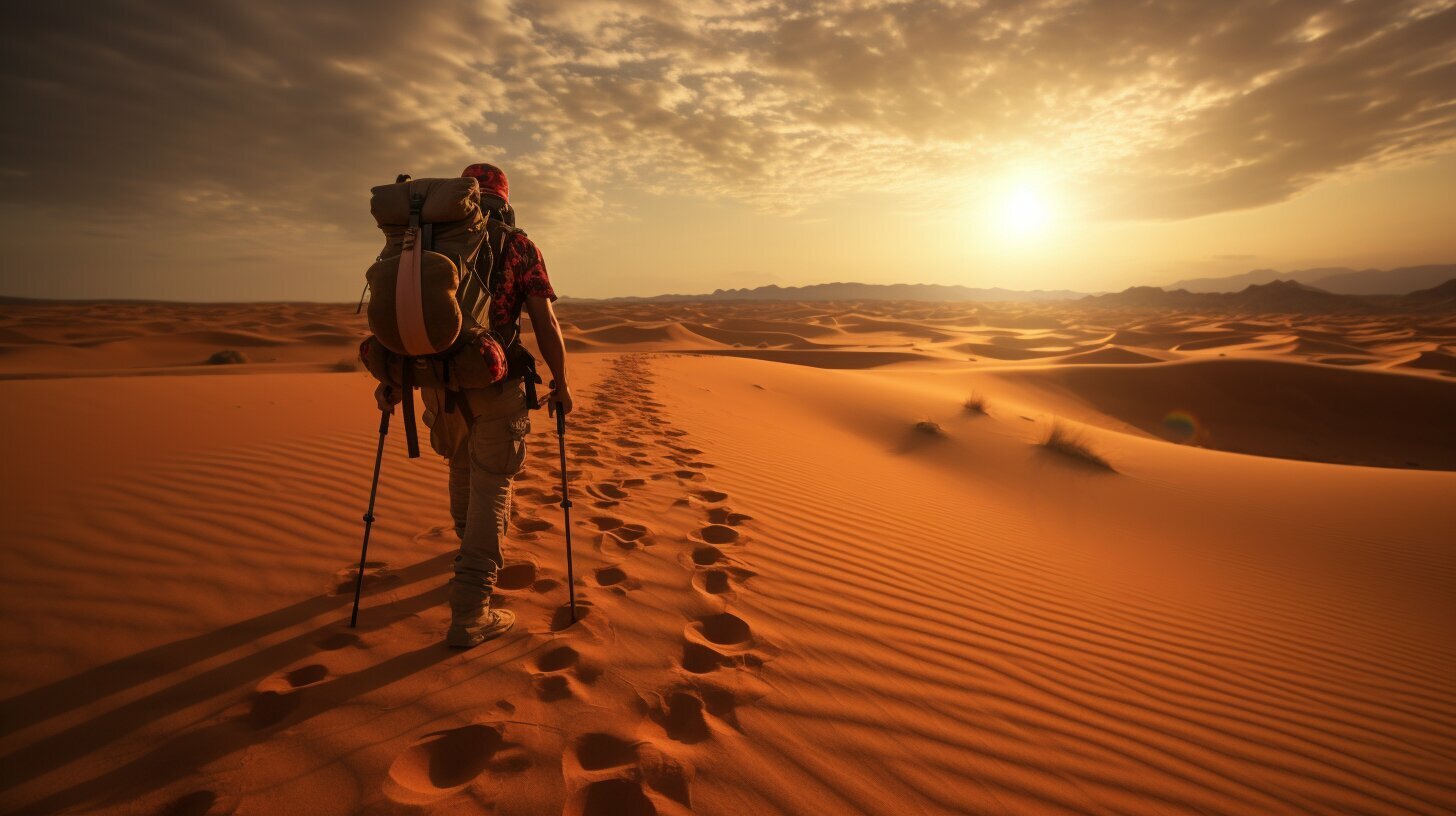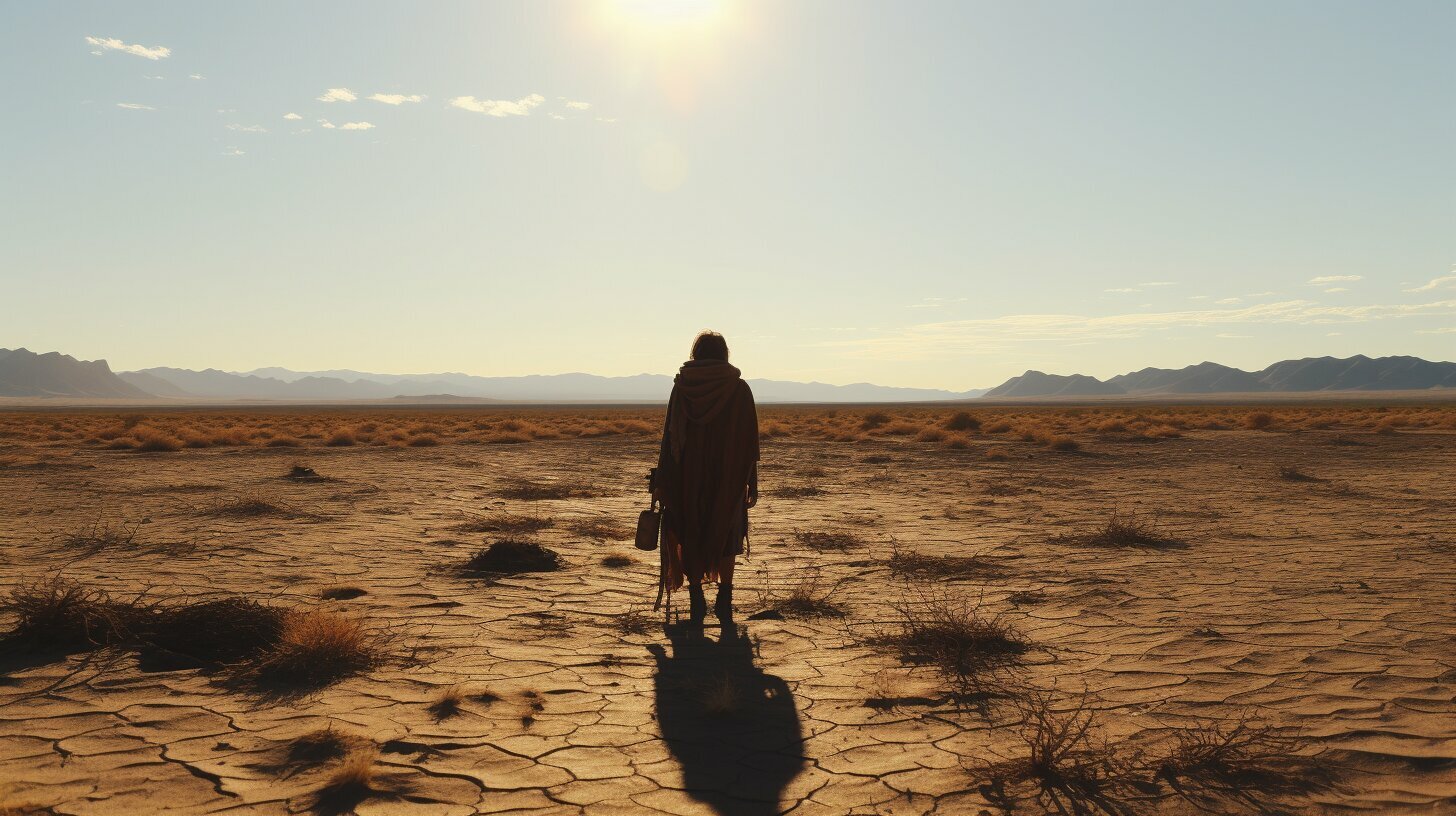Heading into the desert? Before you begin your adventure, it’s essential to learn the skills necessary for finding food and water in the harsh desert environment. Knowing how to locate water sources, forage for edible plants, and even hunt and trap animals can make all the difference in staying alive and well-fed.
In this guide, we’ll cover the unique challenges of desert survival and provide tips and techniques for finding food and water. So, whether you’re planning a desert hike, a camping trip, or simply want to be prepared for unexpected situations, read on to learn the essential skills for surviving in the desert.
Key Takeaways
- Surviving in the desert requires knowledge of how to find food and water sources.
- Unique challenges such as extreme temperatures and limited resources make survival difficult.
- Skills such as identifying edible plants, hunting and trapping animals, and locating water sources are crucial for desert survival.
Understanding the Challenges of Desert Survival
Surviving in the desert is no easy feat. The extreme temperatures, lack of vegetation, and limited water sources pose significant challenges to anyone trying to find food and water.
The intense heat of the desert can cause dehydration and heat stroke, making it vital to stay hydrated and cool. However, sources of water are scarce, and locating them can be difficult.
Disclosure: When you buy through links on our site, we may earn an affiliate commission.
Furthermore, the lack of vegetation makes it nearly impossible to forage for food. Without access to supermarkets or farms, your options for sustenance are limited to hunting and trapping.
Overall, the unique challenges of desert survival demand a high level of resourcefulness and resilience. But with the right knowledge and skills, anyone can learn to thrive in this harsh environment.
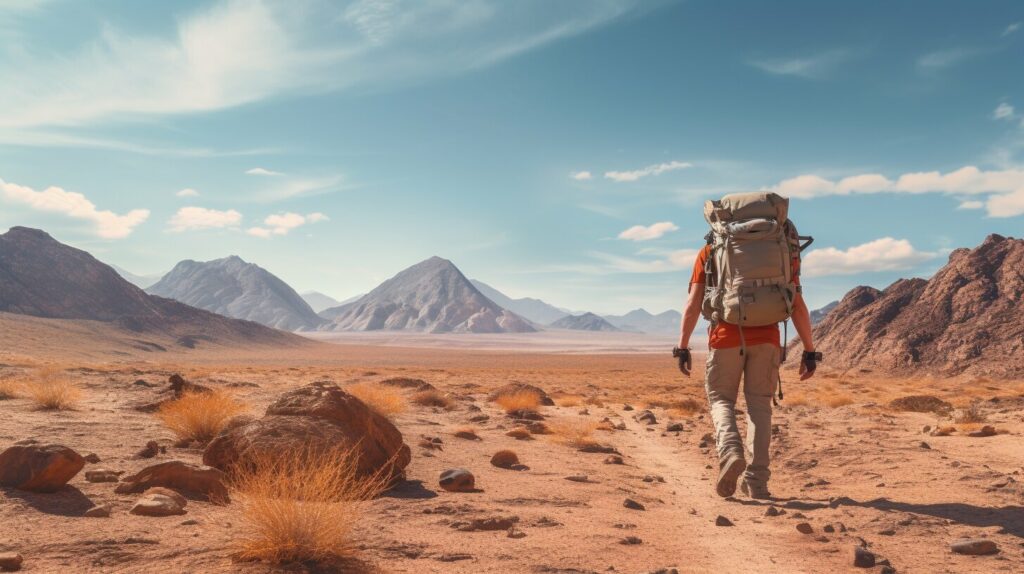
“The desert is a harsh mistress, demanding respect and humility from those who dare to venture into her domain.”
Identifying Edible Plants in the Desert
When it comes to finding food in the desert, you might be surprised to find that there are actually many edible plants that can be foraged. However, it is essential to know which ones are safe to eat and how to identify them properly.
One common edible plant found in many desert regions is the prickly pear cactus. This cactus produces sweet, edible fruit that can be eaten raw or cooked. The pads of the prickly pear can also be cooked and eaten as a vegetable.
| Plant | Description |
|---|---|
| Agave | This succulent plant produces a sweet sap that can be boiled down into syrup or fermented into an alcoholic beverage. The leaves can also be peeled and roasted for food. |
| Mesquite | The mesquite tree produces edible seed pods that can be ground into flour or used to make a sweet, syrupy liquid. |
Agave
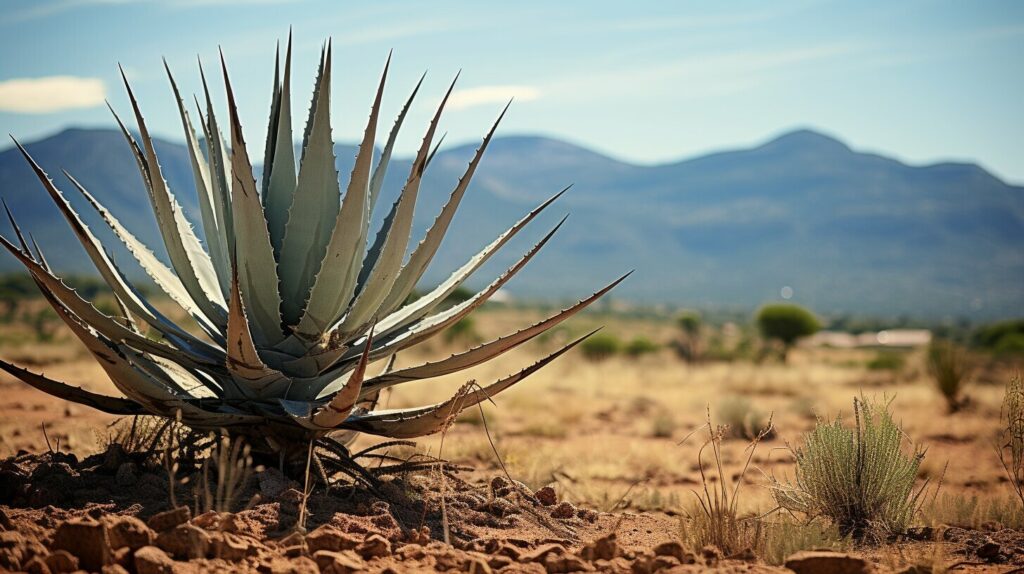
Mesquite
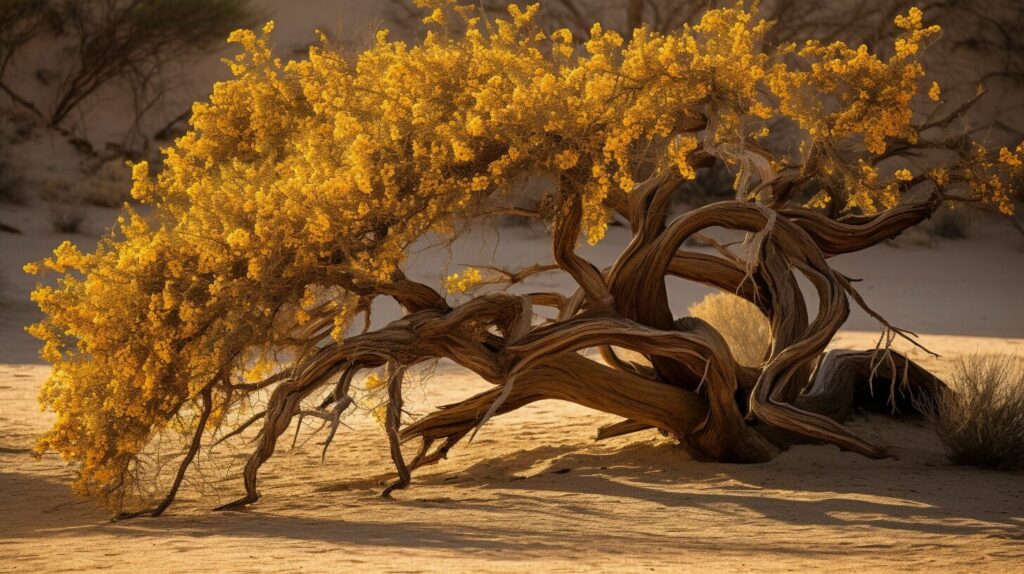
Remember: never eat a plant unless you are absolutely certain that it is safe. Some plants, such as the oleander, are highly toxic and can be deadly if ingested.
It is also important to avoid foraging in areas that have been treated with pesticides or other chemicals, as these can contaminate the plants and make them unsafe for consumption.
Tools for Foraging
When foraging for edible plants in the desert, it is helpful to have some tools on hand to aid in identification and gathering. These might include:
- A plant identification guide or app
- A pair of gloves to protect against thorns and prickly plants
- A small shovel or trowel for digging up roots and tubers
- A container for carrying and storing the foraged plants
With the right knowledge and tools, foraging for food in the desert can be a lifesaving skill. However, it is important to approach foraging with caution and always err on the side of caution when unsure about the safety of a particular plant.
Hunting and Trapping Techniques in the Desert
When finding edible plants is not enough, hunting and trapping can also be an effective way to find food in the desert. However, it’s important to note that many animals, such as snakes and lizards, in the desert are not safe for consumption. Therefore, it’s crucial to learn about the animals and their behaviors before attempting to trap or hunt them.
Snaring: One method of trapping animals is snaring. This involves setting up a noose made of wire or cord and placing it in a location where animals are likely to pass by. When the animal’s head passes through the noose, it tightens and traps the animal. It’s important to check the snares regularly to prevent the animal from suffering for too long or escaping.
Tracking: Tracking is another effective hunting technique. By examining animal tracks in the sand, it’s possible to determine which direction the animal was traveling in and how long ago it passed by. It’s important to be patient, move quietly, and remain alert for any signs of movement or sound.
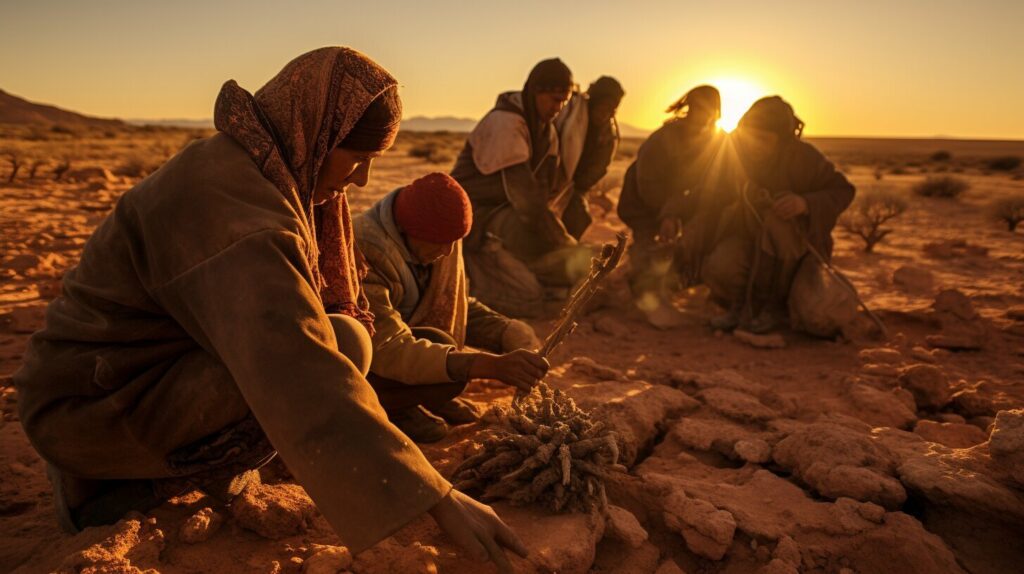
Natural Camouflage: Using natural camouflage is another way to catch animals in the desert. By blending in with the environment, it’s possible to approach animals more closely without being detected. This technique involves wearing clothing that matches the color of the surrounding area and moving slowly and carefully.
Weapons: The most common weapons used for hunting in the desert are firearms and bows and arrows. It’s important to note that using a firearm in the desert requires a lot of practice since the dry air and wind can affect accuracy. Bows and arrows, on the other hand, are quieter and may be a better option for smaller game.
Locating Water Sources in the Desert
Water is critical for your survival in the desert. The lack of readily available water sources makes it essential to know how to locate them. Here are some techniques:
Natural Indicators of Water
Nature offers many clues that can lead to water sources. Look for areas with vegetation, as plants need water to grow. Follow animal tracks, as they often lead to water sources. Also, keep an eye out for insects such as ants, as they build their colonies near water sources.
Topography
Find low-lying areas such as valleys and canyons. Water often collects in these areas, and if you dig down, you may be able to find water just below the surface.
Rock Formations
Rock formations can also indicate potential water sources. Look for areas where there are seeps or springs, which can be found at the base of cliffs or in rocky crevices.
Using Technology
There are also tools that you can use to locate water sources, such as handheld GPS devices and satellite imagery. These can be especially useful if you are in an unfamiliar area.
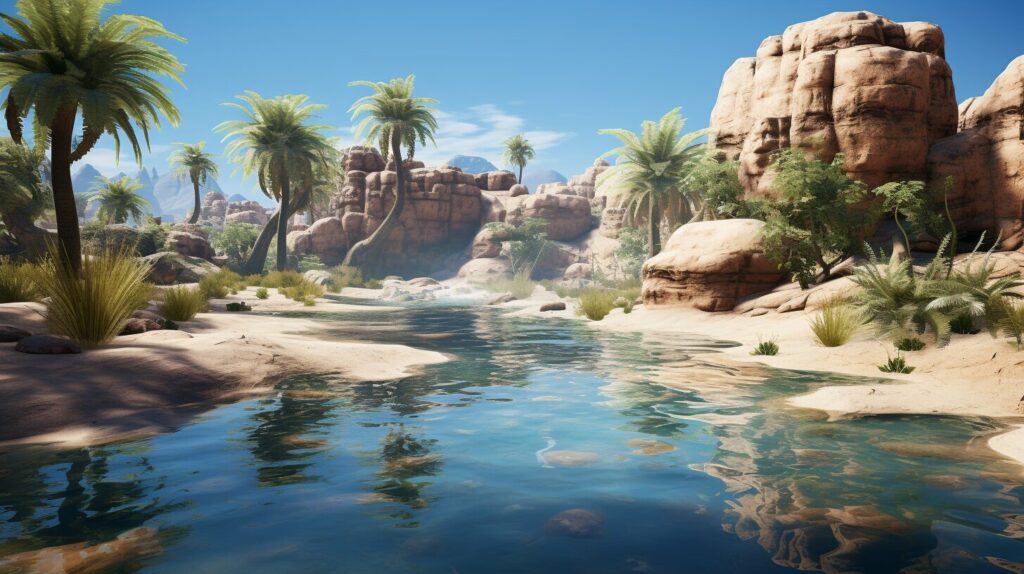
Remember, it’s important to conserve water once you find it. Boil or purify it before drinking, and try to collect as much as possible. By using these techniques, you can increase your chances of finding water and staying hydrated in the desert.
Desert Water Purification Methods
When it comes to finding water in the desert, the next step is to make sure it is safe for consumption. While there are many sources of water in the desert, most of them are not safe to drink without purification. Fortunately, there are several methods for purifying water in the desert.
One of the most common methods of purification is boiling the water. To do this, simply heat the water until it comes to a rolling boil for at least 5 minutes. This will kill most of the bacteria and parasites that may be present in the water.
Another method is to use a solar still. This involves creating a small hole in the ground and placing a container in the center. Place a clear plastic sheet over the hole and secure the edges with rocks or dirt. The heat from the sun will cause the water to evaporate and collect on the underside of the plastic sheet, where it will drip into the container.
| Method | Pros | Cons |
|---|---|---|
| Boiling | Simple and effective | Requires fuel and a container to boil water in |
| Solar still | Uses only natural resources | Requires a clear plastic sheet and a container to collect water in |
| Water filtration systems | Effective at removing bacteria and other contaminants | Requires a filtration system and may not remove viruses or chemicals |
Another option is to use a water filtration system. These systems use a series of filters to remove impurities from the water, including bacteria and other contaminants. However, it’s important to note that not all filtration systems are created equal, so be sure to do your research before investing in one.
Remember, finding water is only half the battle – purifying it is equally important. By using these methods, you can ensure that the water you find in the desert is safe to drink.
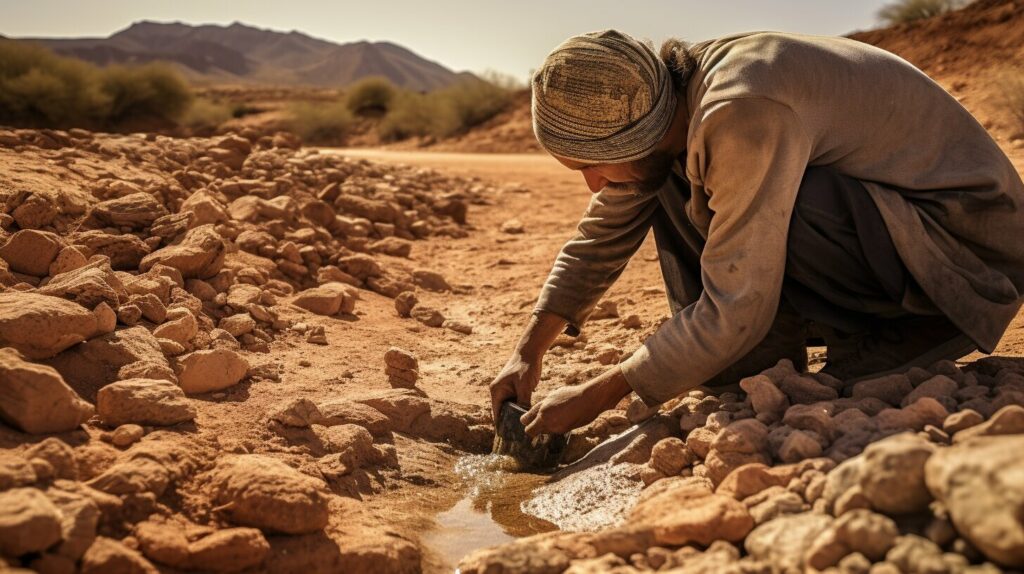
Essential Equipment for Desert Survival
When you’re in the desert, having the right equipment can make all the difference in your ability to find food and water, protect yourself from the elements, and stay alive. Here are some essential items to consider packing:
| Item | Purpose |
|---|---|
| Map and compass | Help you navigate and avoid getting lost |
| Sun protection (hat, sunglasses, and sunscreen) | Protect your skin and eyes from the intense desert sun |
| First aid kit | Treat injuries and illnesses that may arise |
| Water containers | Store and transport water from various sources |
| Fire-starting tools (matches, lighter, firestarter) | Help you start a fire for warmth and cooking |
| Knife or multipurpose tool | Useful for cutting food, building shelter, and other tasks |
| Emergency shelter | Protect you from the elements and provide warmth at night |
| Flashlight or headlamp | Light your way in the dark and signal for help |
These are just some of the essentials that you should consider packing for a desert survival situation. Remember to assess your own needs and the specific conditions of the region you’ll be traveling to, and adjust your packing list accordingly.
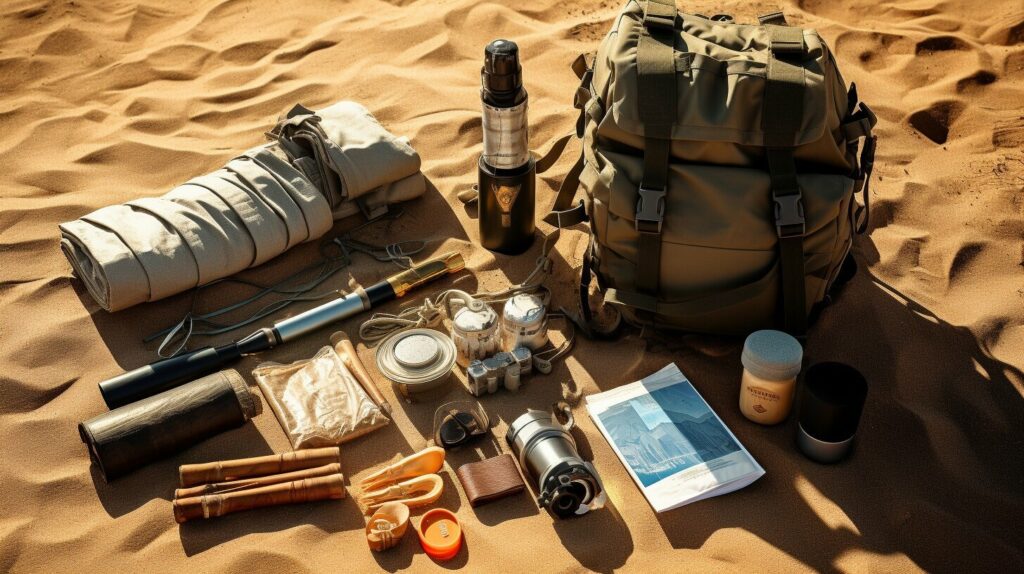
Staying Hydrated and Nourished in the Desert
When it comes to surviving in the desert, staying hydrated and nourished is crucial. Without adequate supplies of water and food, your body will quickly begin to suffer from dehydration and starvation, both of which can be life-threatening. Here are some tips to help you stay hydrated and nourished in the harsh desert environment.
Drink Plenty of Water
First and foremost, you must drink plenty of water to stay hydrated. The extreme conditions of the desert can cause you to lose fluids rapidly through sweating, so you need to consume at least 1 liter of water per hour to keep your body functioning properly. Make sure to carry enough water with you at all times, and conserve it by drinking slowly and avoiding exertion during the hottest parts of the day.
Eat High-Protein Foods
Protein is essential for staying nourished in the desert, as it helps to build and repair muscle tissue, which can be damaged by the harsh conditions. Look for high-protein foods like nuts, seeds, and dried meat, and try to incorporate them into your meals whenever possible. You can also catch small animals like lizards or snakes for an additional protein source.
Avoid Sugary and Salty Foods
Avoid sugary and salty foods as much as possible, as they can actually dehydrate you and make you feel thirstier. Stick to foods that are high in water content, like fruits and vegetables, and avoid anything that is overly processed or high in sodium.
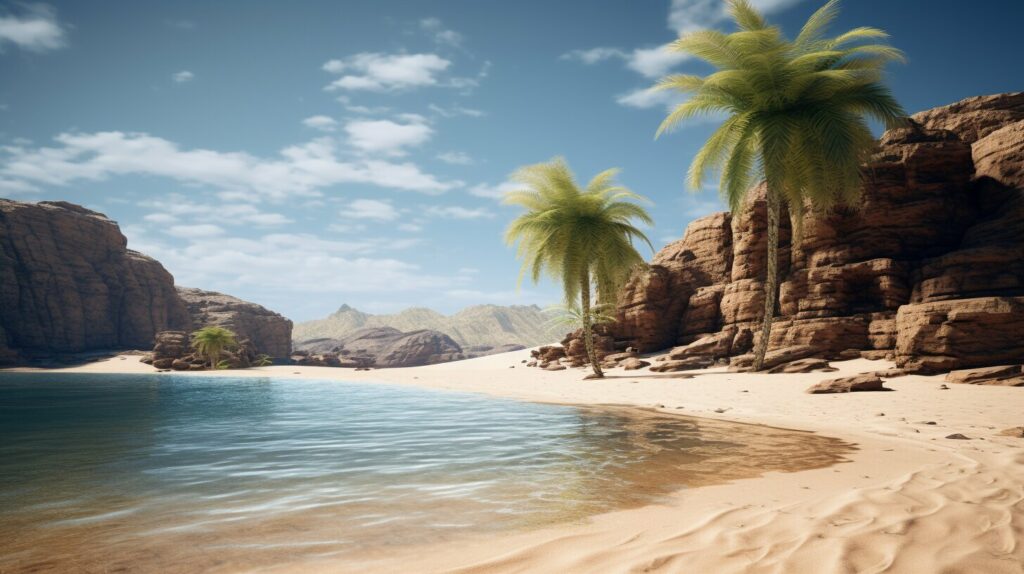
Remember, the key to surviving in the desert is to stay hydrated and nourished at all times. Keep these tips in mind as you explore the harsh environment, and you’ll be better equipped to handle whatever challenges come your way.
Conclusion
You have now learned some of the essential skills needed for finding food and water in the desert. Remember, survival in the desert can be a difficult and dangerous task, but with the right knowledge and preparation, you can increase your chances of making it through even the toughest situations.
Always keep in mind the unique challenges that come with surviving in the desert, such as extreme temperatures, limited water sources, and lack of vegetation. Take the time to learn about edible plants and hunting and trapping techniques that can help you find food. Additionally, make sure you know how to locate and purify water in the desert.
Having the proper equipment is also crucial to your survival, so make sure you have the right tools on hand. Items such as navigation tools, first aid kits, and containers for carrying and storing food and water are all important to have.
Never Stop Learning
It is important to keep practicing your survival skills, even if you aren’t planning on venturing into the desert anytime soon. Practice purifying water and foraging for food, and make sure you are familiar with all of your equipment.
Remember, the key to survival in the desert is preparation. So stay hydrated, stay nourished, and most importantly, stay safe!
FAQ
Q: Can I survive in the desert without food and water?
A: No, finding food and water is crucial for survival in the desert. Without proper hydration and nourishment, your body will quickly become weak and unable to function.
Q: How can extreme temperatures affect my ability to find food and water in the desert?
A: Extreme temperatures in the desert can make it even more challenging to find food and water. The scorching heat can cause dehydration and affect the availability of water sources and edible plants.
Q: Are there any edible plants that can be found in the desert?
A: Yes, there are edible plants that can be found in the desert. It is important to learn how to identify them accurately to avoid consuming toxic plants.
Q: What are some hunting and trapping techniques that can be used in the desert?
A: Hunting and trapping techniques in the desert can vary, but some common methods include snaring, tracking, and using natural camouflage to catch animals for food.
Q: How can I locate water sources in the desert?
A: Locating water sources in the desert can be challenging, but there are natural indicators such as vegetation and animal tracks that can lead you to potential water sources. Digging wells and collecting rainwater are also effective methods.
Q: How can I purify water found in the desert?
A: There are several methods to purify water found in the desert, including boiling, using solar stills, and employing water filtration systems. These methods help remove impurities and make the water safe for consumption.
Q: What essential equipment do I need for desert survival?
A: Essential equipment for desert survival includes navigation tools, first aid kits, and containers for carrying and storing food and water. It is important to be prepared with the necessary gear.
Q: How can I stay hydrated and nourished in the desert?
A: To stay hydrated and nourished in the desert, it is important to ration your food and water, manage sweat loss, and recognize dehydration symptoms. Taking proactive measures will help maintain your health in harsh conditions.

